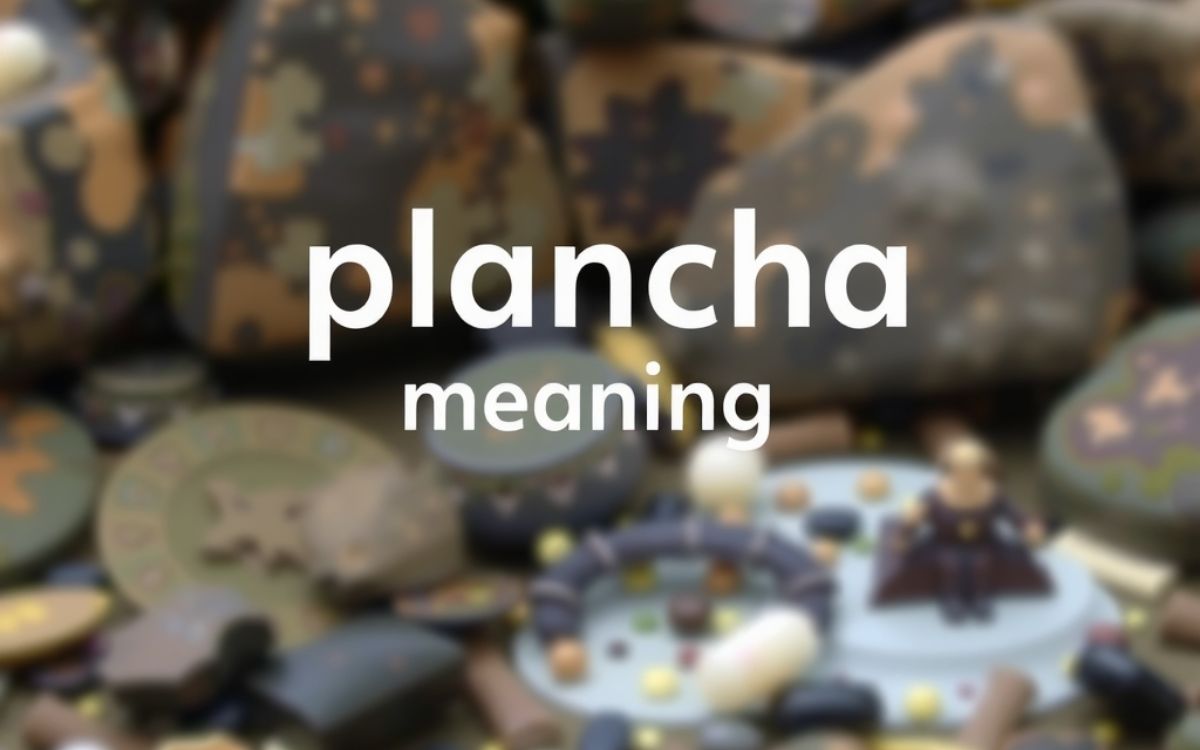If you’ve ever scanned a restaurant menu and spotted the word plancha, you might have paused and wondered what it really means. It sounds exotic, yet it’s often used casually in cooking conversations, especially in Spanish and Latin American cuisine. The truth is, plancha is more than just a word—it’s a style of cooking with deep roots and global appeal.
At its core, plancha refers to a flat, heated metal surface used to cook food quickly at high temperatures. Imagine the sizzling sound of seafood hitting a hot griddle or the perfect char lines on vegetables—that’s cooking a la plancha. Unlike traditional grilling, where flames lick the food, plancha cooking relies on intense, even heat that locks in flavor without drying things out.
This cooking method has found its way into kitchens and restaurants worldwide, from tapas bars in Spain to modern American bistros. It’s praised for being both simple and healthy, requiring little oil while delivering rich, smoky flavor. Whether you’re a food lover, a home cook, or someone just curious about foreign culinary terms, understanding plancha meaning will give you a fresh perspective on how cultures influence what ends up on your plate.
What Does “Plancha” Mean?
The word plancha comes from Spanish and literally means “iron” or “griddle.” In cooking, it refers to a flat metal surface used to sear food quickly and evenly. Unlike a barbecue grill with open flames, a plancha delivers direct, even heat across a smooth surface.
This method is especially popular in Spain, France, and Latin America, but U.S. chefs also love it for its ability to create smoky, charred flavors without drying out food.
What Is the English Word for Plancha?
In English, the closest word for plancha is griddle or flat-top grill. Think about the sizzling surface you see at a diner where pancakes, burgers, or bacon are cooked. That’s basically a plancha in action.
What Is a Plancha in French?
In French cooking, a plancha is a borrowed term from Spain. It’s usually used outdoors and is a favorite for summer grilling. Instead of cooking over flames, the food rests on the heated surface, locking in juices while adding a smoky edge.
What Is “A La Plancha” in Spanish?
The phrase “a la plancha” translates to “on the iron” or “on the griddle.” In Spanish cuisine, this style is iconic.
For example, calamares a la plancha means squid grilled on a hot iron plate. The high heat sears the outside while keeping the inside tender. This method works beautifully with fish, steak, chicken, and vegetables.
What Is a Plancha in English Food?
In the U.S. and UK, chefs use planchas in restaurants to achieve flavors you can’t get with a standard pan. The surface is perfect for searing salmon, cooking steaks evenly, or charring vegetables. It’s like a middle ground between grilling and pan-frying—fast, flavorful, and less oily.
What Is a Plancha in Slang?
Interestingly, plancha isn’t only about food. In Spanish slang, it can mean an iron used for clothes. In some Latin American countries, saying “qué plancha” is like saying “what a mess” or “how embarrassing.” Context is key here, since the meaning shifts based on the situation.
Extra Language Curiosities
- What is Spanish for stinky? The word is apestoso.
- What is a Spanish caseta? It’s a small hut or tent often used at festivals, especially during the famous Seville Fair.
Is Plancha Cooking Healthy?
Yes—plancha cooking is one of the healthiest methods. Because food is seared on a hot metal plate, it requires very little oil. Meats cook in their own natural juices, locking in nutrients. Vegetables also retain their crispness and flavor without being drenched in fat.
For example, a piece of salmon cooked “a la plancha” will have fewer calories and more natural flavor compared to deep-fried fish. This is one reason many U.S. households now buy countertop planchas or use flat-top grills for quick, healthy meals.
Conclusion
The word plancha may seem small, but it carries a lot of cultural and culinary weight. From its Spanish roots meaning “iron” to its role in kitchens around the world, it represents a cooking style that’s fast, flavorful, and versatile. Whether in French backyards or U.S. restaurants, the plancha has become a favorite for chefs who want bold taste without unnecessary fuss.
More than just a cooking tool, it’s a method that combines tradition with health benefits, requiring minimal oil while preserving natural flavors. So next time you see “a la plancha” on a menu, you’ll know it’s not just food—it’s an experience of vibrant taste and centuries-old cooking heritage.
FAQs
What is the English word for plancha?
The closest English word for plancha is griddle or flat-top grill, a flat heated surface used for cooking evenly at high temperatures.
What is a plancha in French?
In French, plancha refers to a flat metal grill, often used outdoors, inspired by Spanish cooking traditions for searing meats, seafood, and vegetables.
What is a la plancha in Spanish?
The phrase “a la plancha” means “on the griddle” in Spanish, describing a cooking style where food is seared quickly on a hot flat surface.
What is a plancha in English food?
In English food culture, a plancha is like a flat-top grill, used to cook fish, meats, and vegetables with smoky, charred flavors.
What is a plancha in slang?
In slang, especially in Latin America, plancha can mean a clothes iron, or figuratively, an embarrassing mistake—like saying “what a blunder” or “how awkward.”
What is Spanish for stinky?
The Spanish word for stinky is apestoso, commonly used to describe unpleasant odors from food, places, or even people in everyday conversations.
What is a Spanish caseta?
A caseta in Spain is a small hut or tent, often seen at festivals like Seville Fair, where people gather to eat, drink, and dance.
Is plancha cooking healthy?
Yes, plancha cooking is healthy because it uses little oil, preserves natural flavors, and sears food evenly without the heavy fats of frying.

Welcome to Bloomnis.com! I am the admin, here to bring you the best jokes and laughter. My goal is to make your day brighter with funny content. Enjoy jokes, puns, and humor anytime. Keep smiling and have fun with us. Laughter is the best medicine!
















